
Shooting the Moon
By Tony Colasurdo - Guest Writer and Photographer
Tuesday, Dec. 6, 2022
It’s always an exciting time when there is the possibility of an eclipse, lunar or solar, that can be viewed from our part of the world. When I first heard of the 2022 Lunar Eclipse back in October, I knew that somewhere in the Adirondacks would be my ideal choice of location. I was tempted to stay in Albany by the prospect of the Moon aligning with the Albany Skyline. While that would have also been an amazing photo opportunity, my heart is in the Adirondacks. I looked at a lot of locations that I was familiar with and a lot I wasn’t. I considered several locations in Indian Lake, Colton, Vermontville, Keeseville, and Tupper Lake. Ultimately my decision came to Keeseville, more specifically at Adirondack View Lavender Farm (@adirondackviewlavender on Instagram). I have gotten permission to photograph the night sky and the Milky Way here in the past from the owner and knew this would be the best choice for me. I reached out to the owner Lindsey about my current ambition and she was all for it. When going on private property like Lindsey’s, it’s always best to ask permission first.
With the eclipse projected to last from 3:00 AM to 6:00 AM, I knew I would want to get there between 1:30 AM and 2:00 AM. I left Albany at 11:30 PM to start my drive north, which got me there around 1:45 AM. This gave me plenty of time to set up and make sure my composition was what I wanted. I was also using a Star Tracker which is a device with a small motor that compensates for earth's rotation. I can also use this to track the Moon, allowing me to set up a timelapse of the Eclipse. The actual camera gear I used is a Canon R5, Canon EOS R, Sigma 150-160mm Sports Lens, Sigma 35mm Art Lens and a Canon 2x Teleconverter. I use the 150-600mm with the 2x Teleconverter to give me extra reach which equates to 1200mm. The downside of using the extender is it also doubles my fastest aperture, which is f/13 at 1200mm.
Photographing the Moon and photographing while it is eclipsed require different settings. Normally when photographing the Moon you want a faster shutter speed with a lower aperture and lower ISO. For example, when I photograph the Moon with intention to capture it in detail my settings are usually around 1/800sec shutter speed, f/13 aperture, and ISO1200 at 1200mm. When photographing the eclipse, the light from the Sun that would normally be lighting the moon is now blocked. Which would require you to use longer shutter speeds, faster apertures, and/or higher ISOs. When the Moon was eclipsed, my settings were 0.4 seconds for the shutter speed, still f/13 for my aperture because that is my fastest aperture at 1200mm, and ISO 4000. It’s important to remember that when doing longer exposures at longer focal lengths, you will see motion blur a lot sooner than you would with a wide angle lens.
After I took my test images, I waited for the start of the eclipse. Initially the eclipse can seem rather lackluster, resembling the Moon in one of its waxing or waning phases. However the wait was well worth the reward. Below is a series of my images leading up to the full eclipse before the color popped.
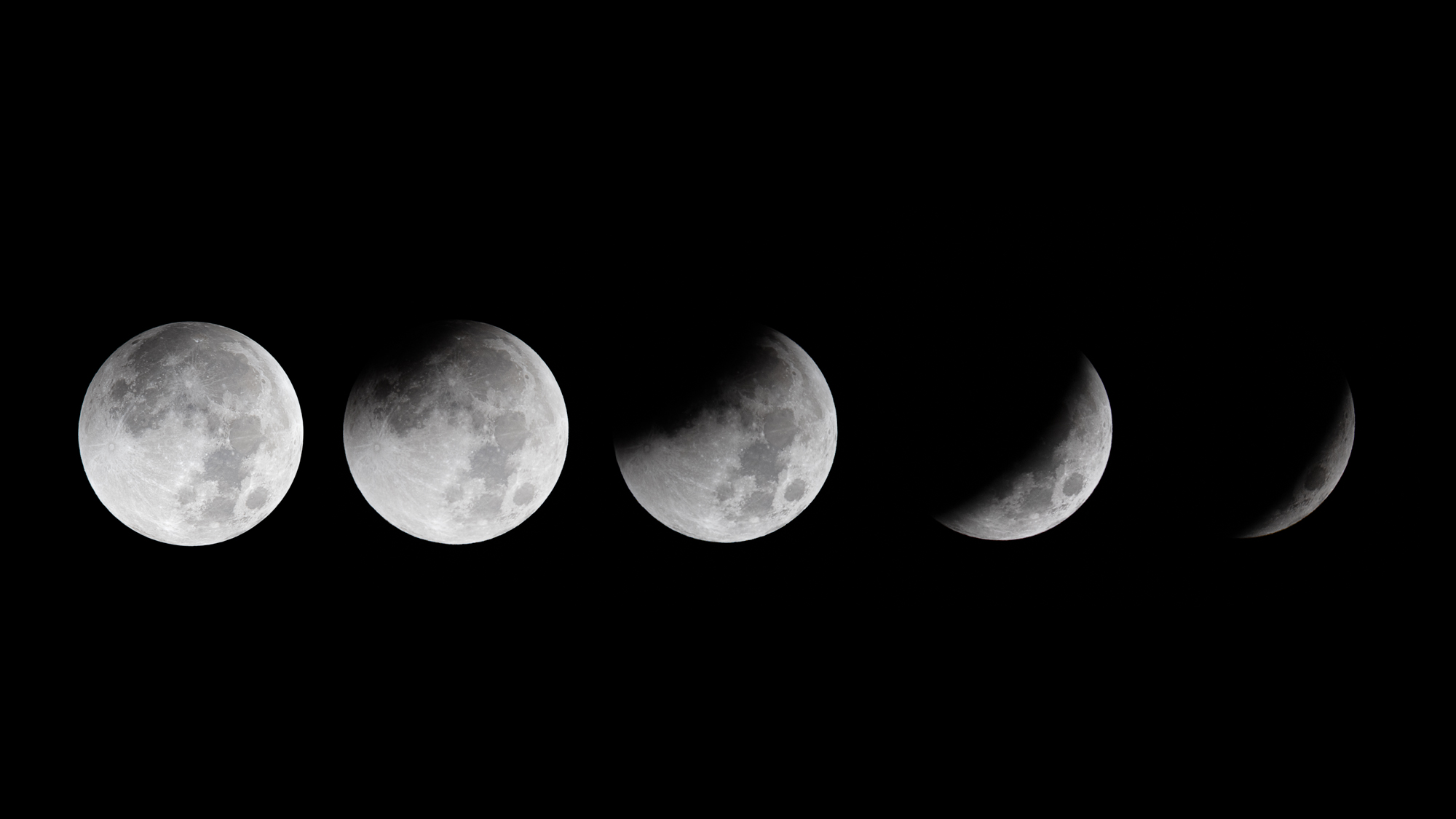
Once we were fully eclipsed, there was a nice red cast to the Moon. During a lunar eclipse, the Moon turns red because the only sunlight reaching the Moon passes through Earth's atmosphere. The more dust or clouds in Earth's atmosphere during the eclipse, the redder the Moon will appear. Another cool spectacle that I witnessed was all the stars becoming fully visible again. The Adirondacks are one of the best places in the United States to view the stars due to the lack of light pollution. While the Moon was full, its bright light was drowning out the stars surrounding it. Once that bright light went away, the stars in the sky came alive again. Below is an image showing the stars over the lavender field. I was lucky enough to capture some nice air glow among the stars as well as Orion towards the top of the frame.
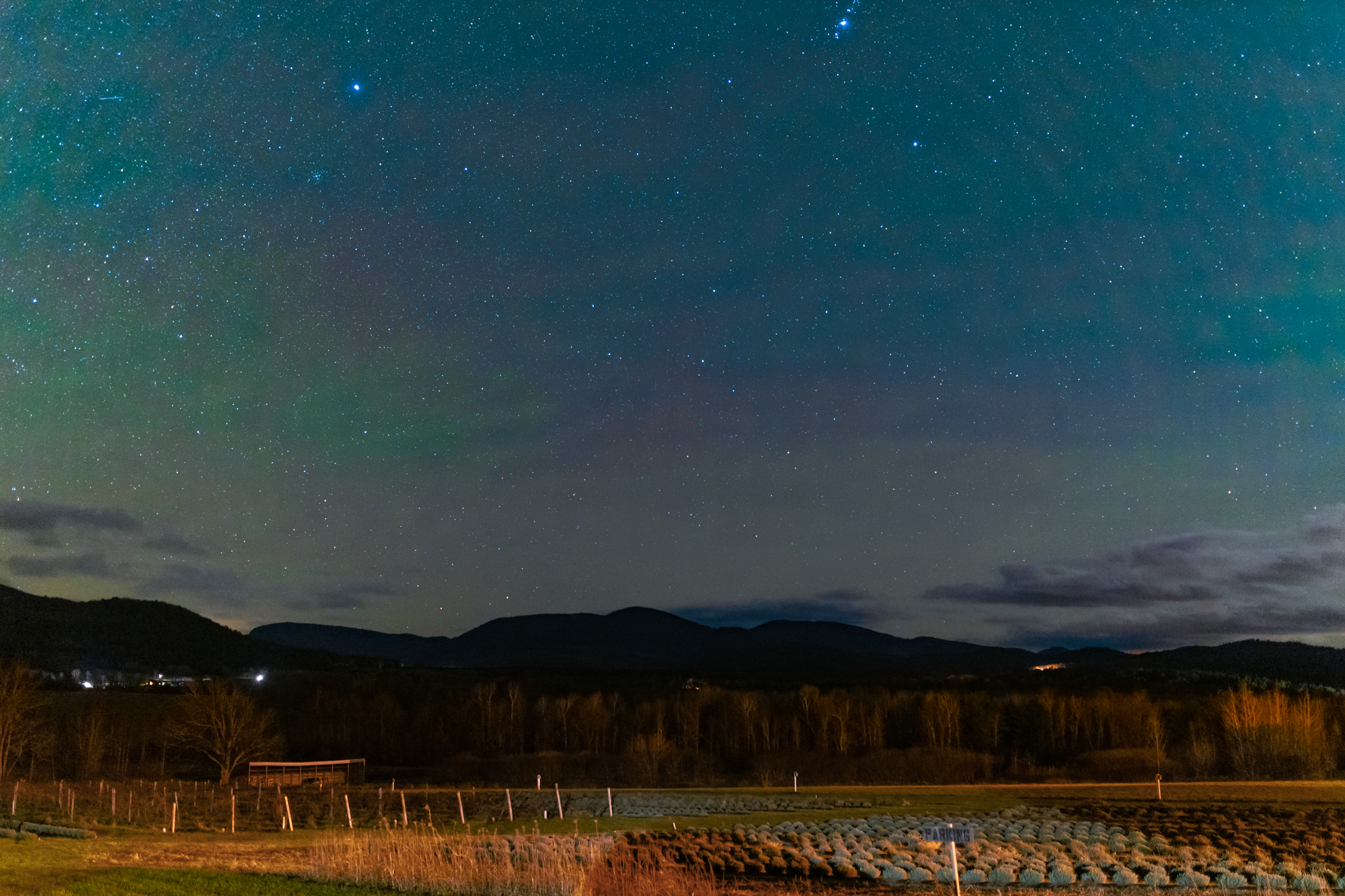
After capturing the stars, I turned my attention to the eclipse. Again, I was very thankful to be in an area with such little light pollution as it gave me plenty of opportunity to capture the images I needed for my final image. The below image is a result of several images blended together to fully show what I saw with my own eyes. The cameras do a great job of capturing images but they can’t always show things as we see them.
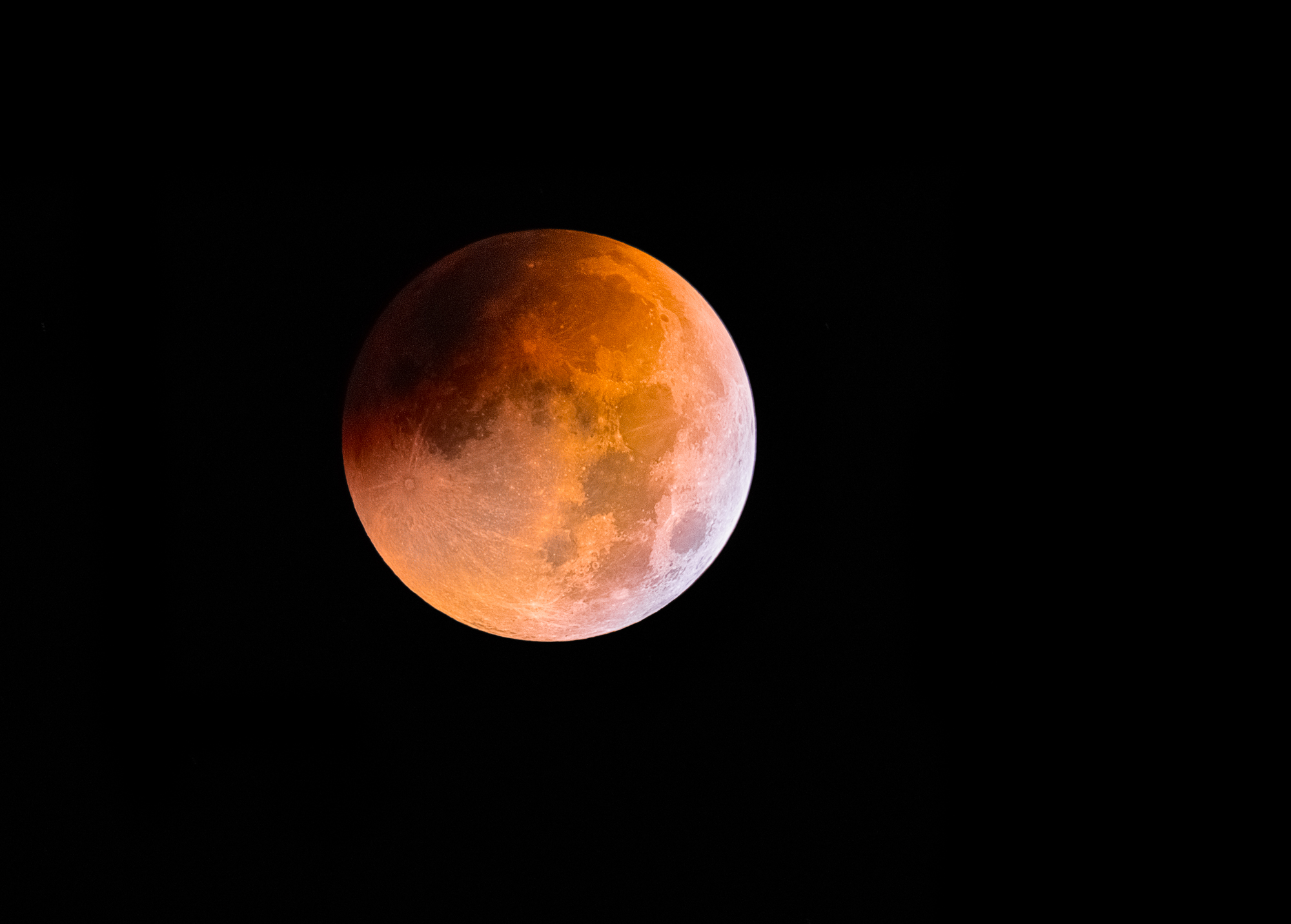
For this image, I captured a base image of the moon for the detail, another while the eclipse was happening, and a third when it was fully eclipsed to be able to get all the color. While I really like this image, I knew I wanted to take a creative approach to another image. I took a longer exposure of the sky while the moon was eclipsed to be able to bring out the stars more as well as create a glow for the moon. Below is the image I just described.
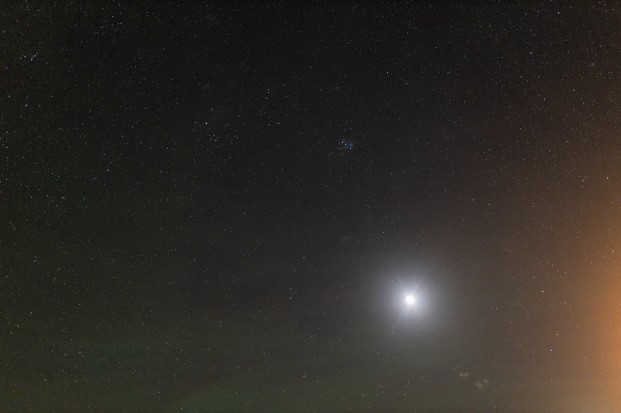
Combining this image of the stars with my more detailed Eclipse image, I was able to create the resulting image below.
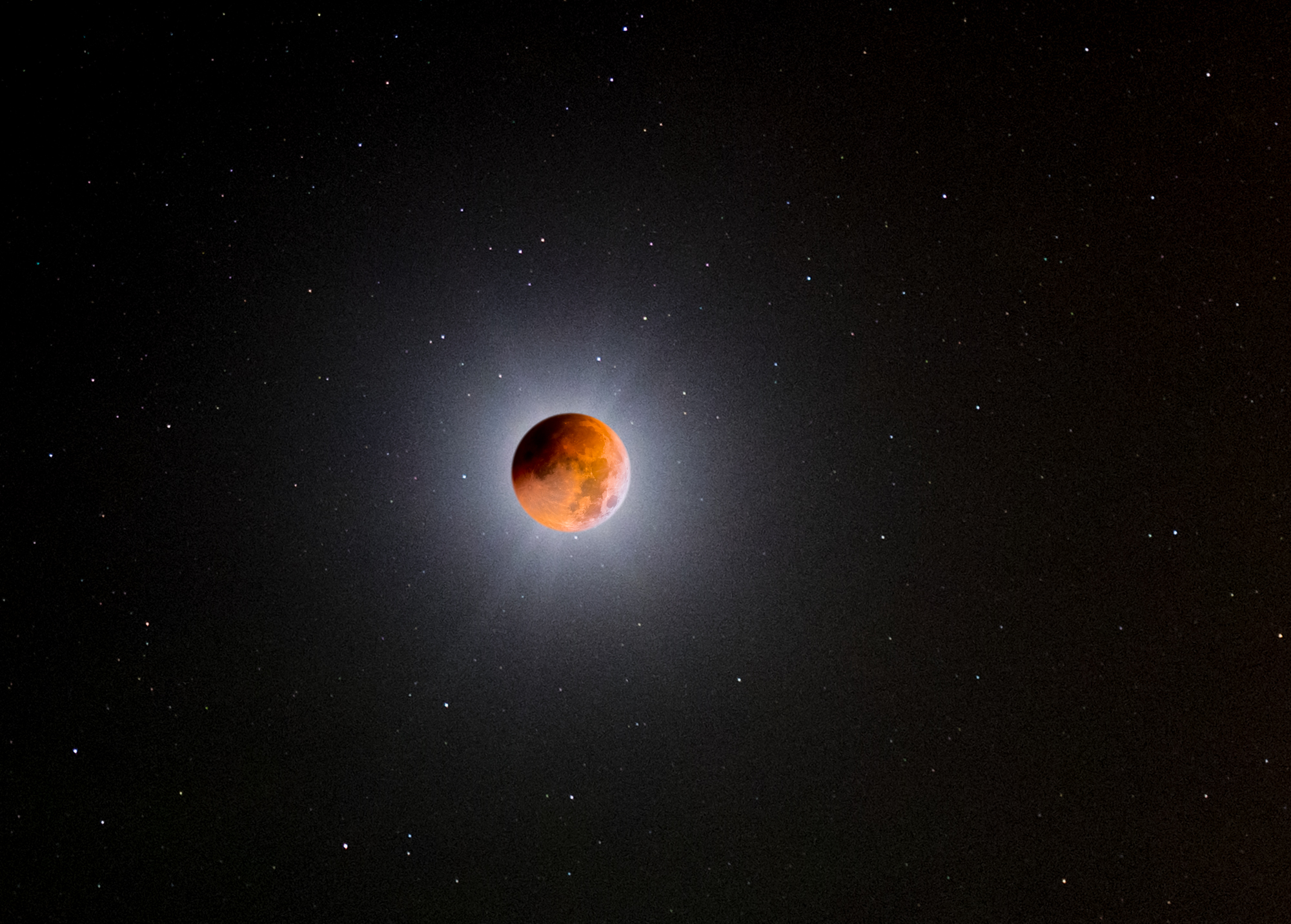
The resulting composite image allows me to showcase how I was able to see the Eclipse from the Adirondacks as I saw it. Overall, I was absolutely thrilled with the decision to come up to the Adirondacks for this special lunar event.
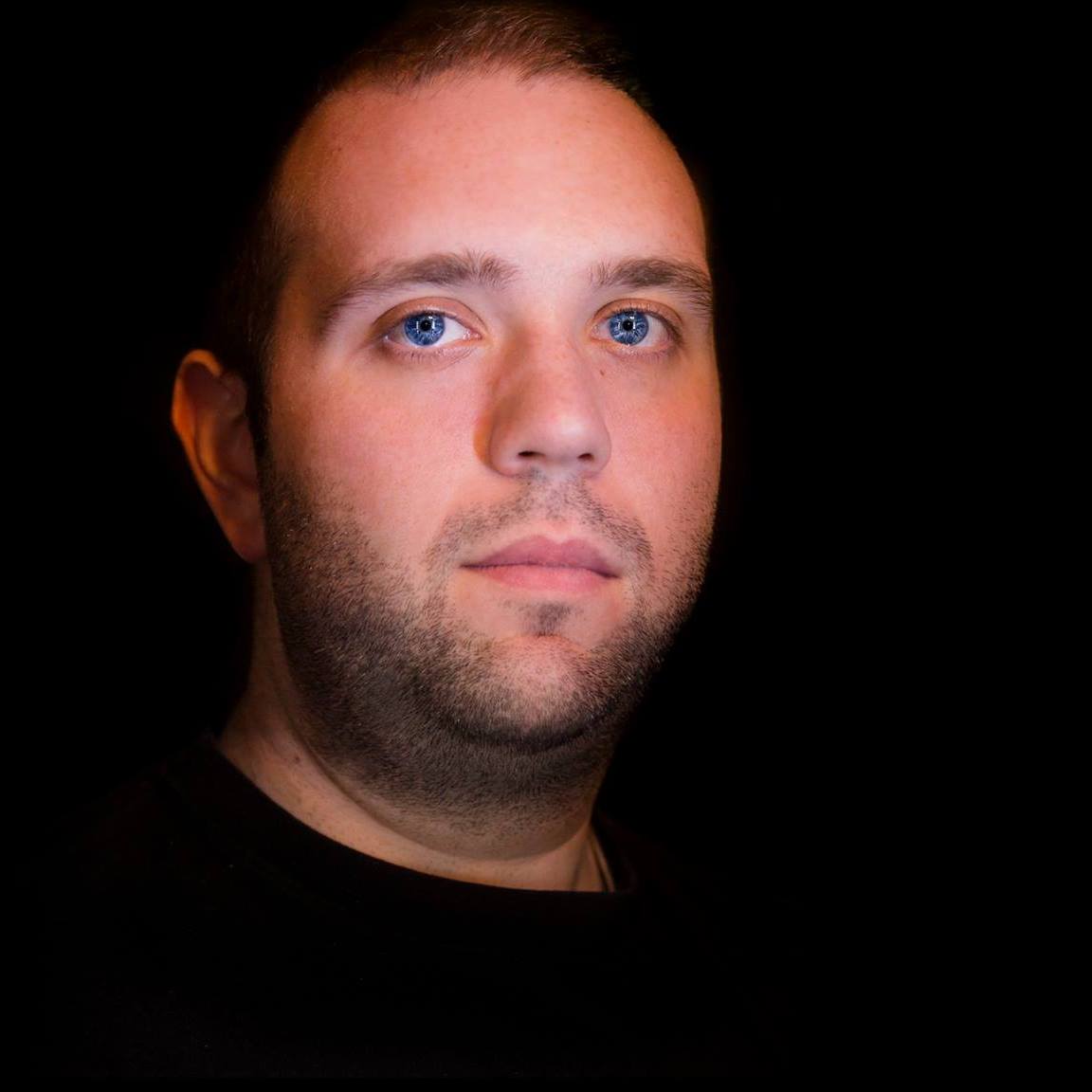
I love being able to share everything I capture in the Adirondacks and beyond. You can keep up with me and my photography on my website, Facebook, or Instagram.




